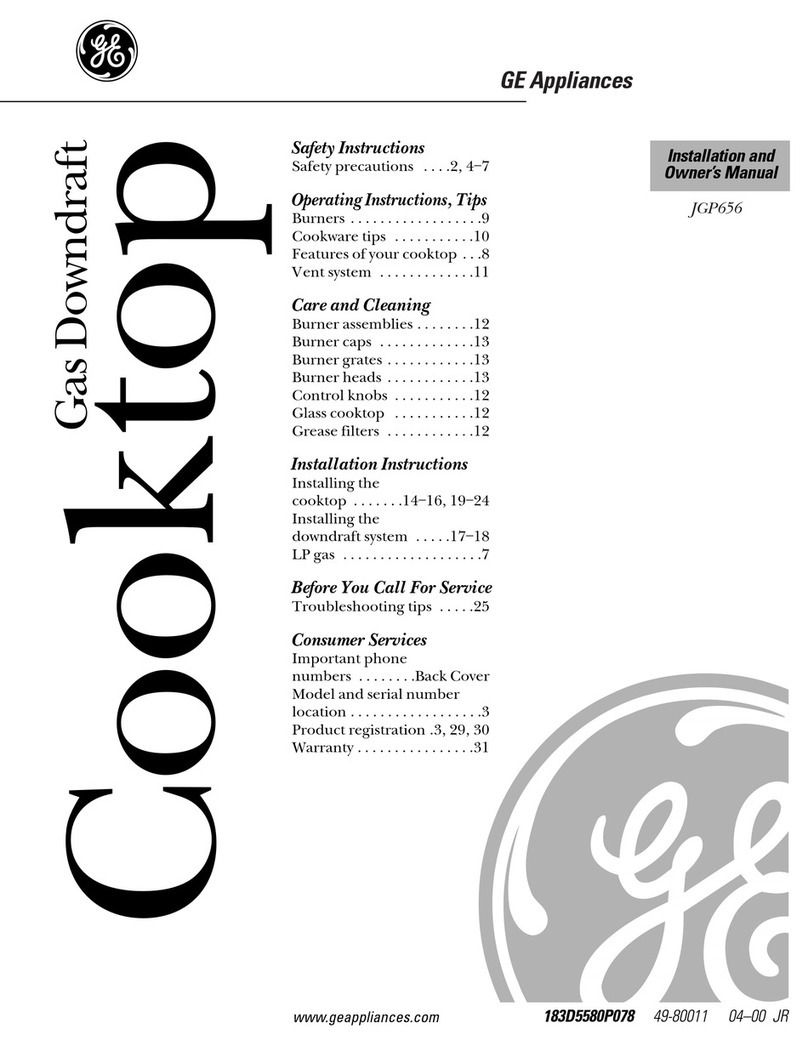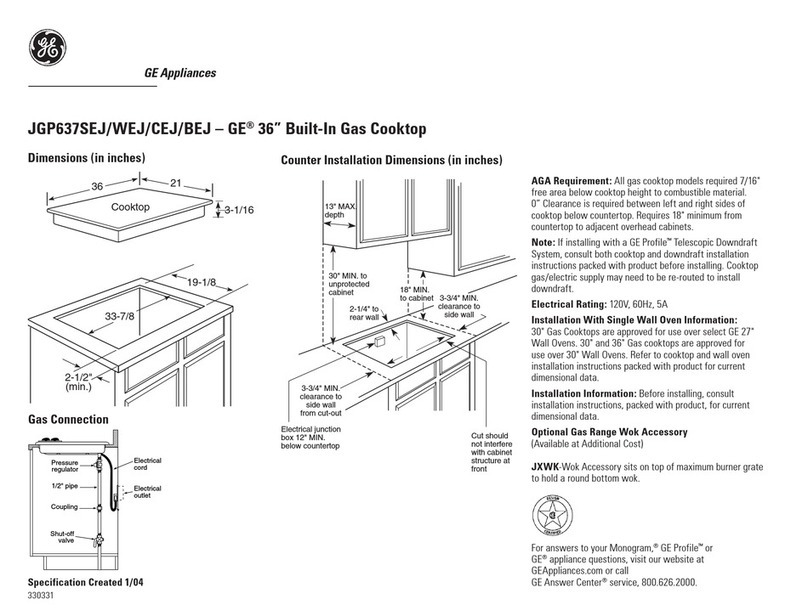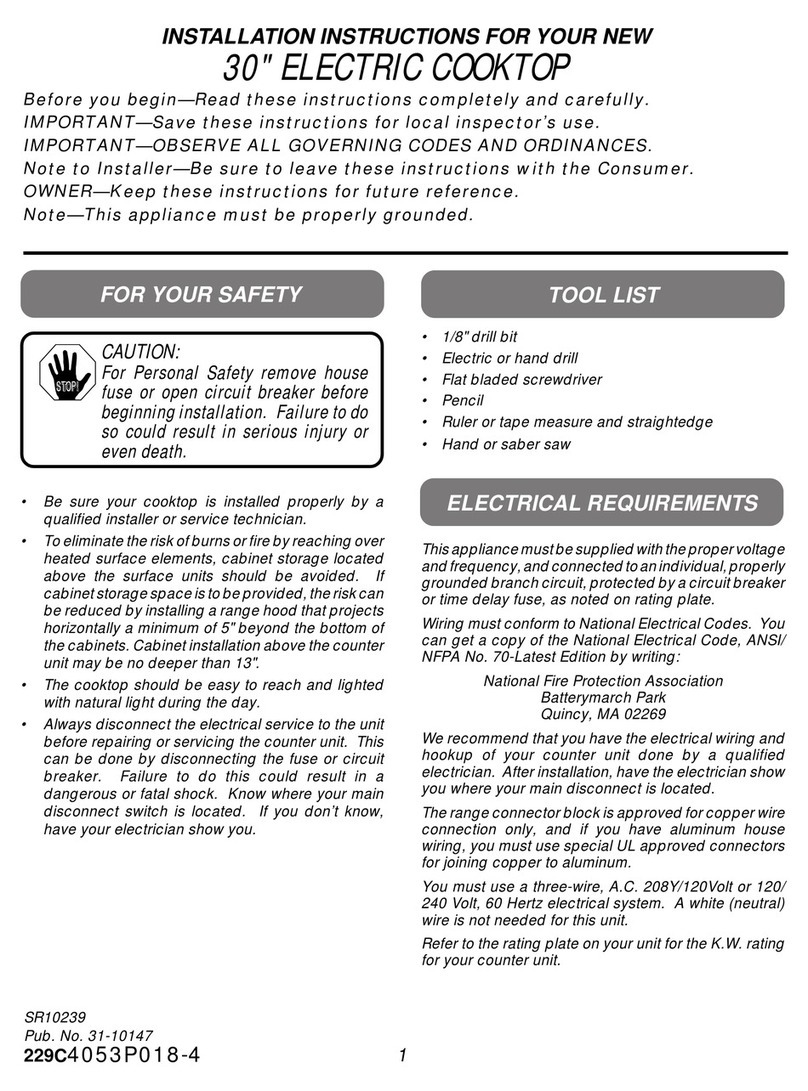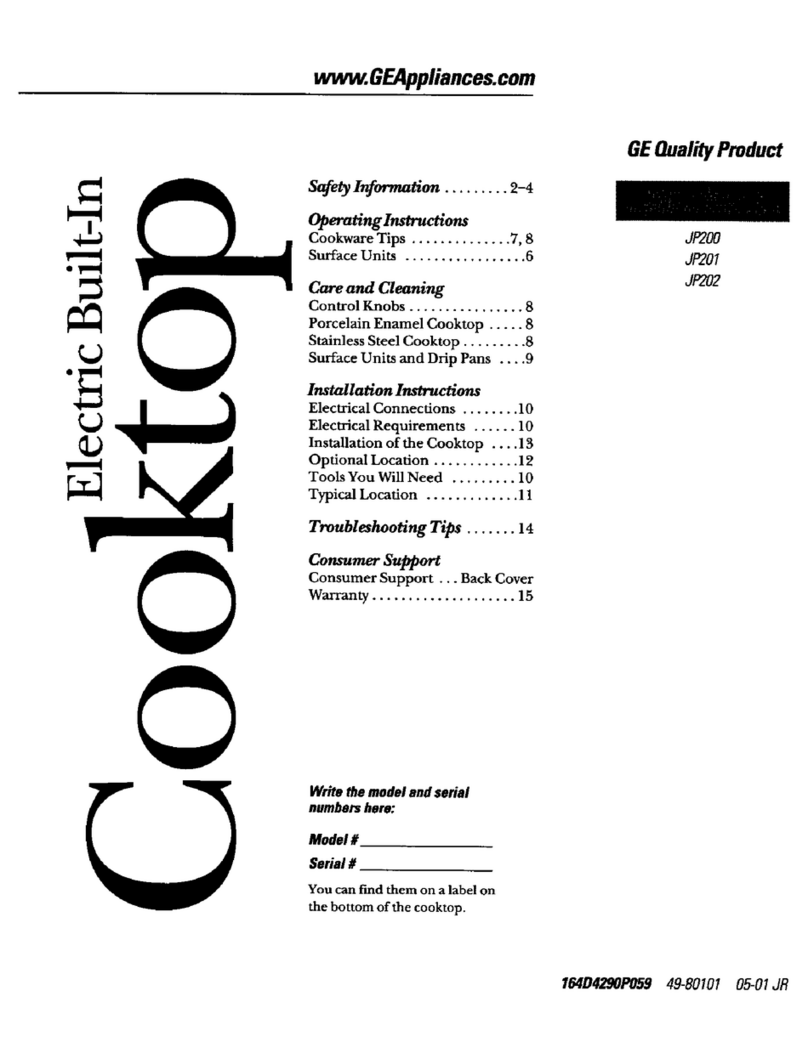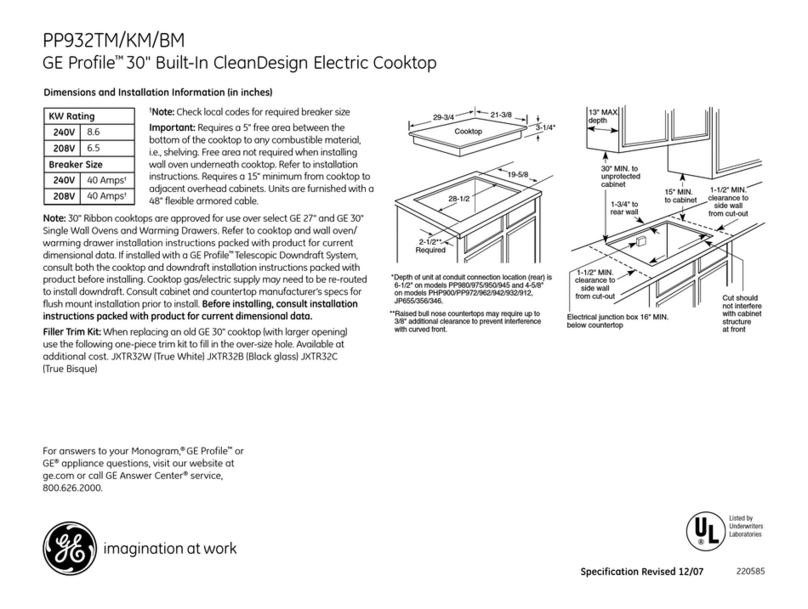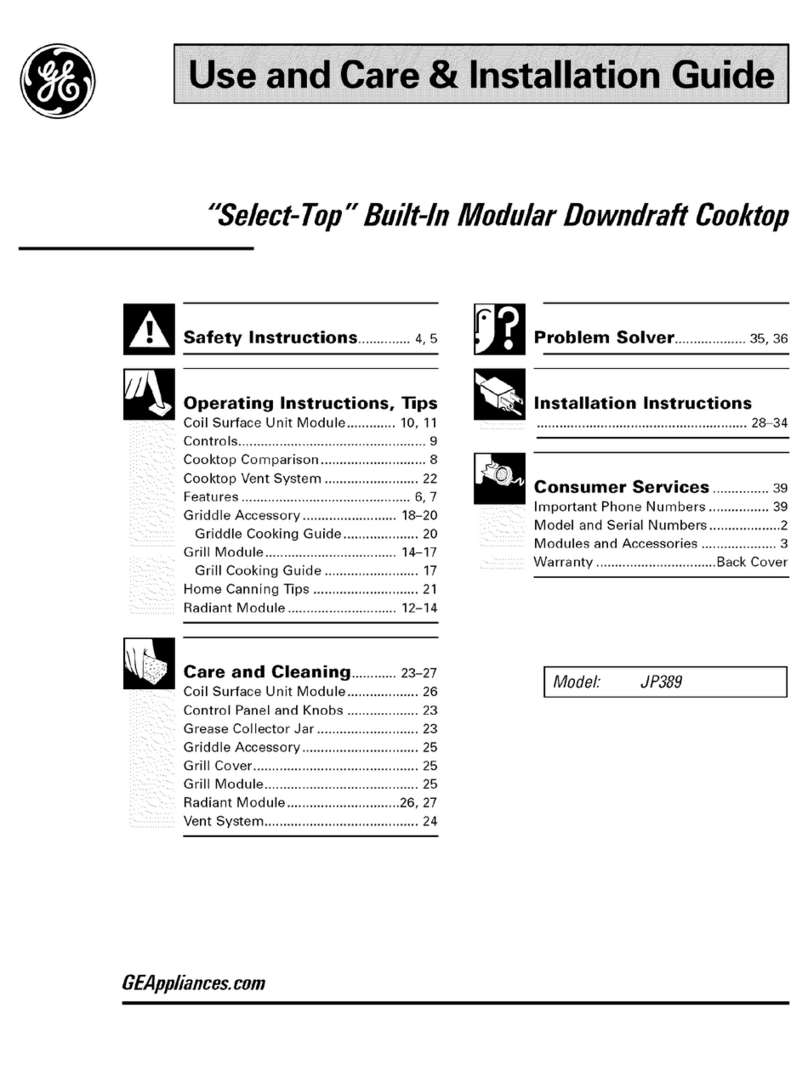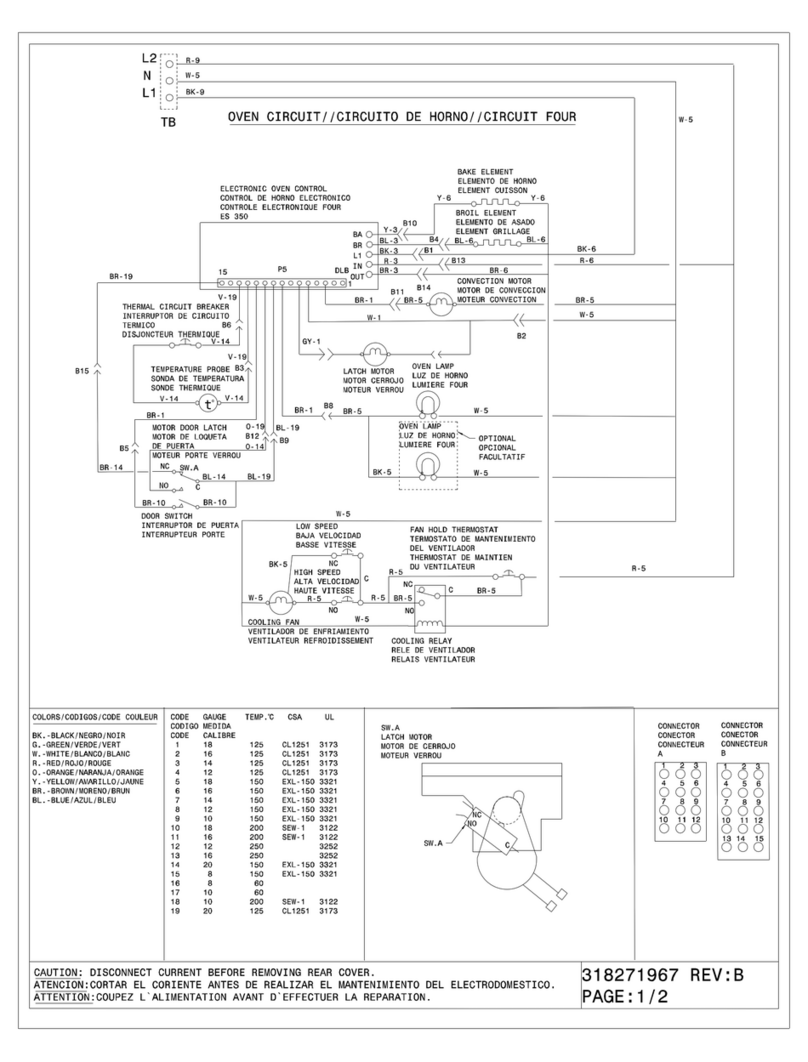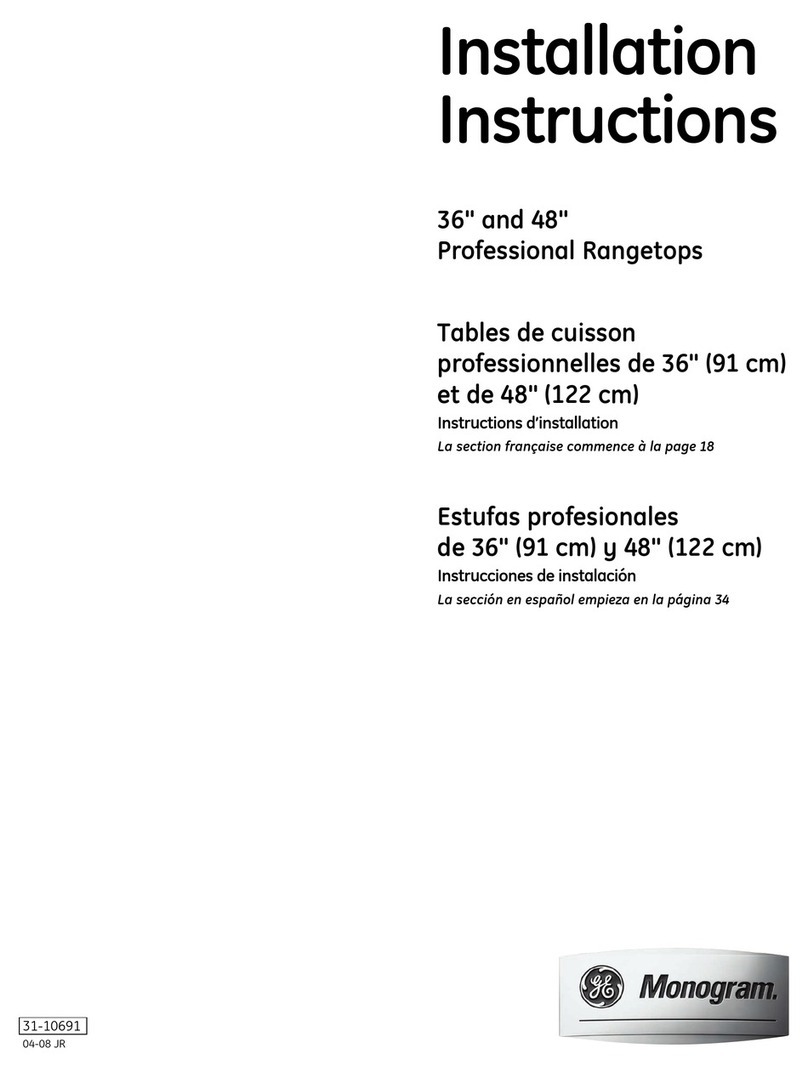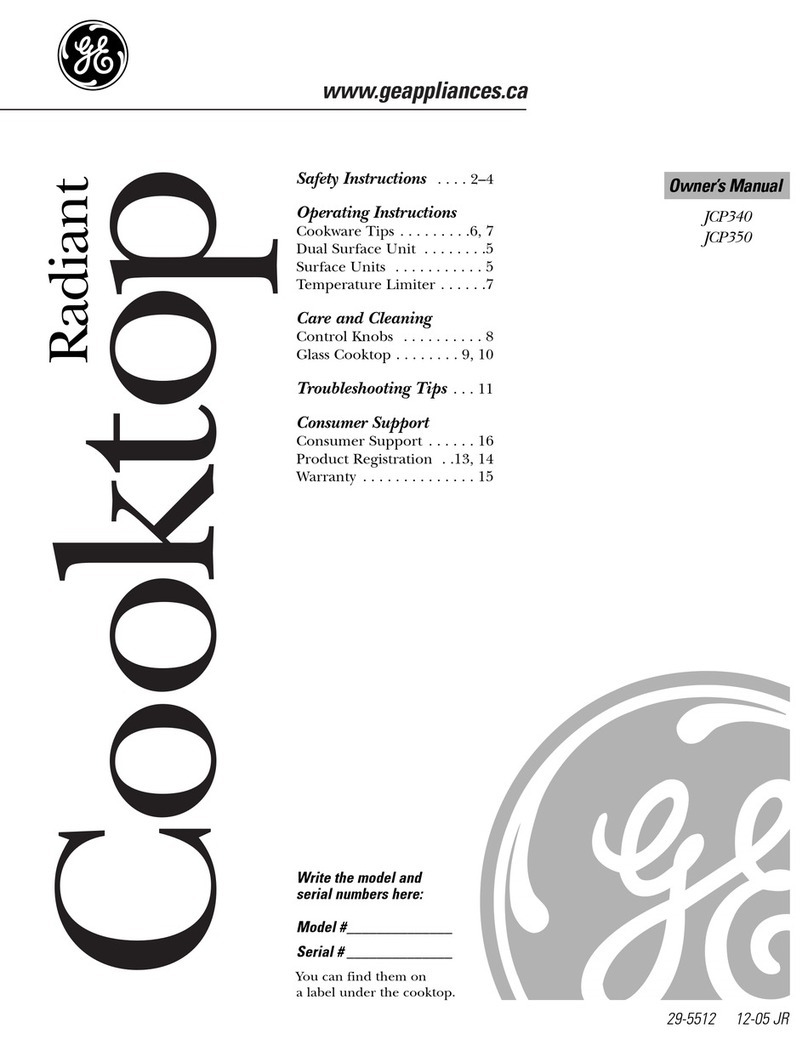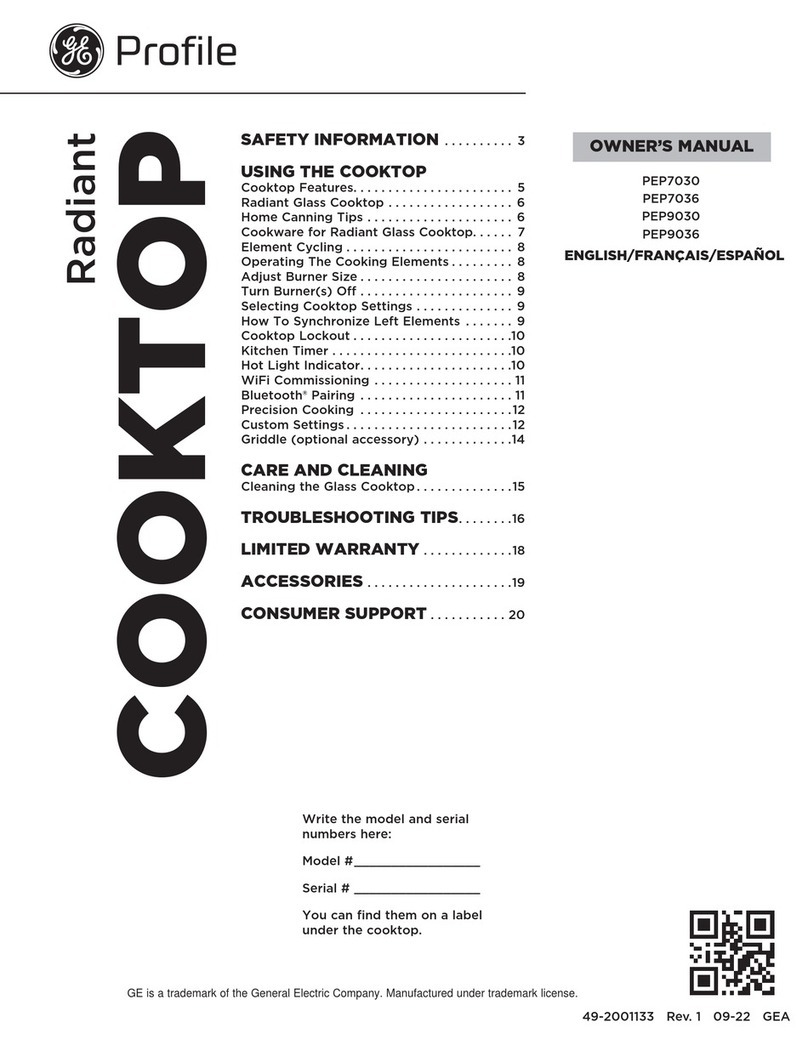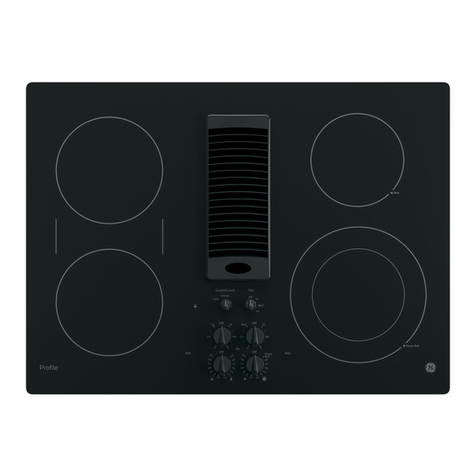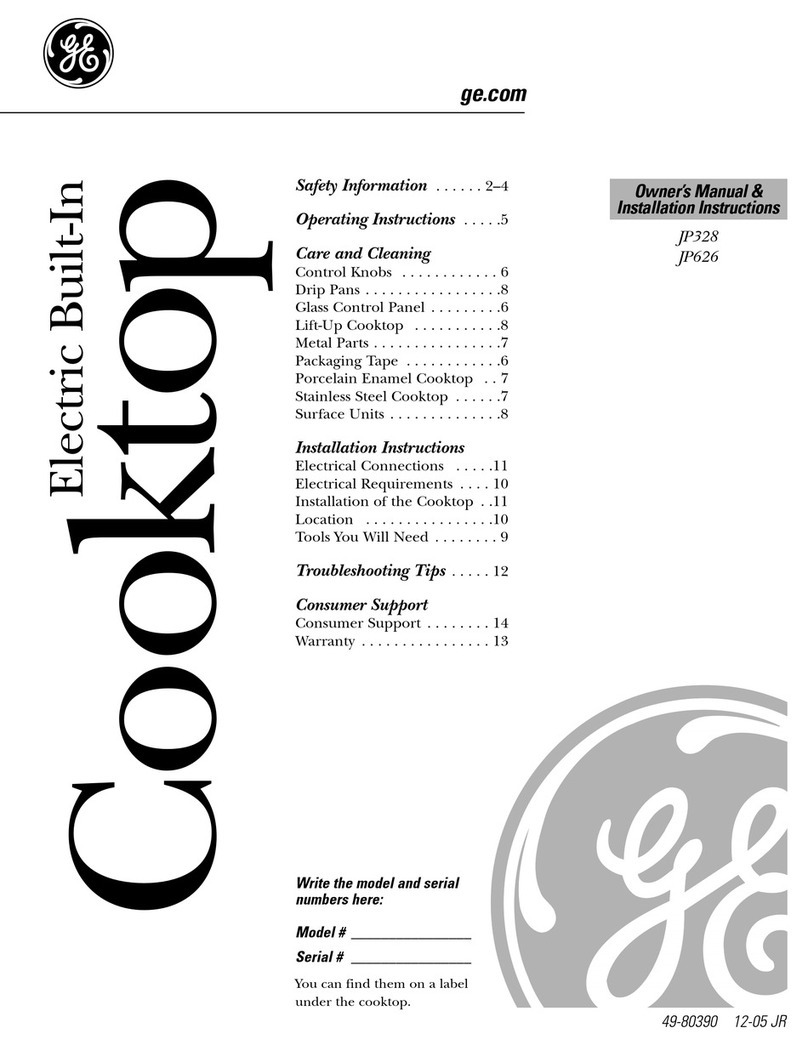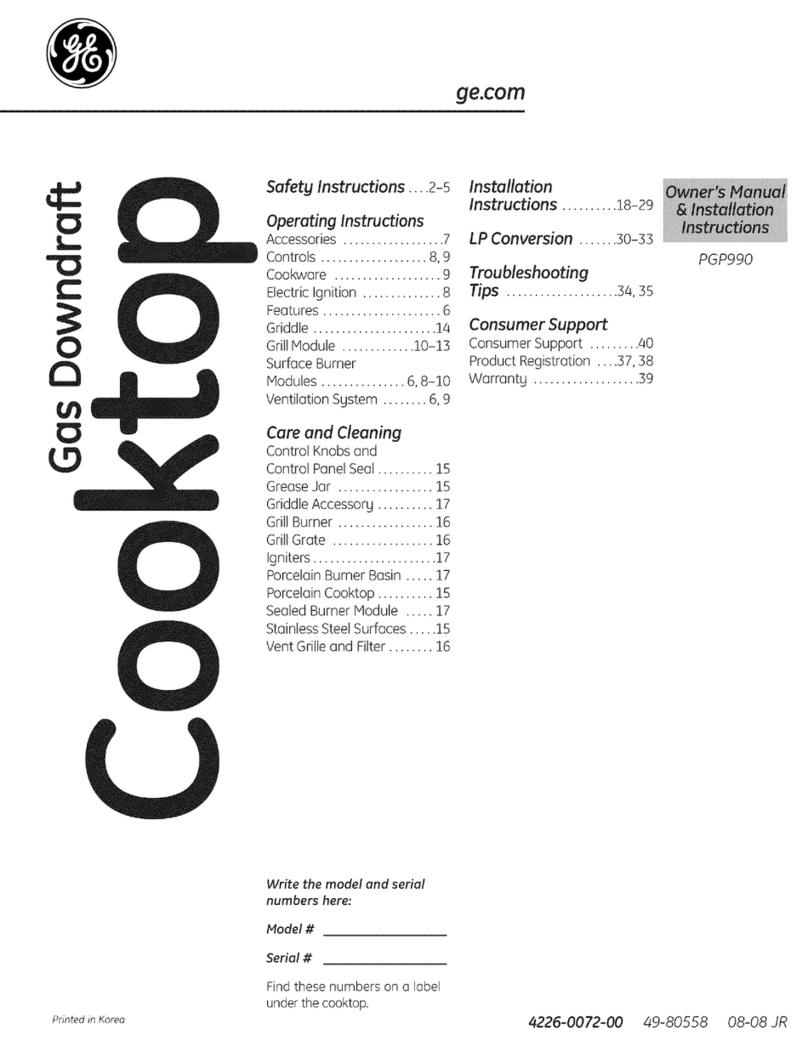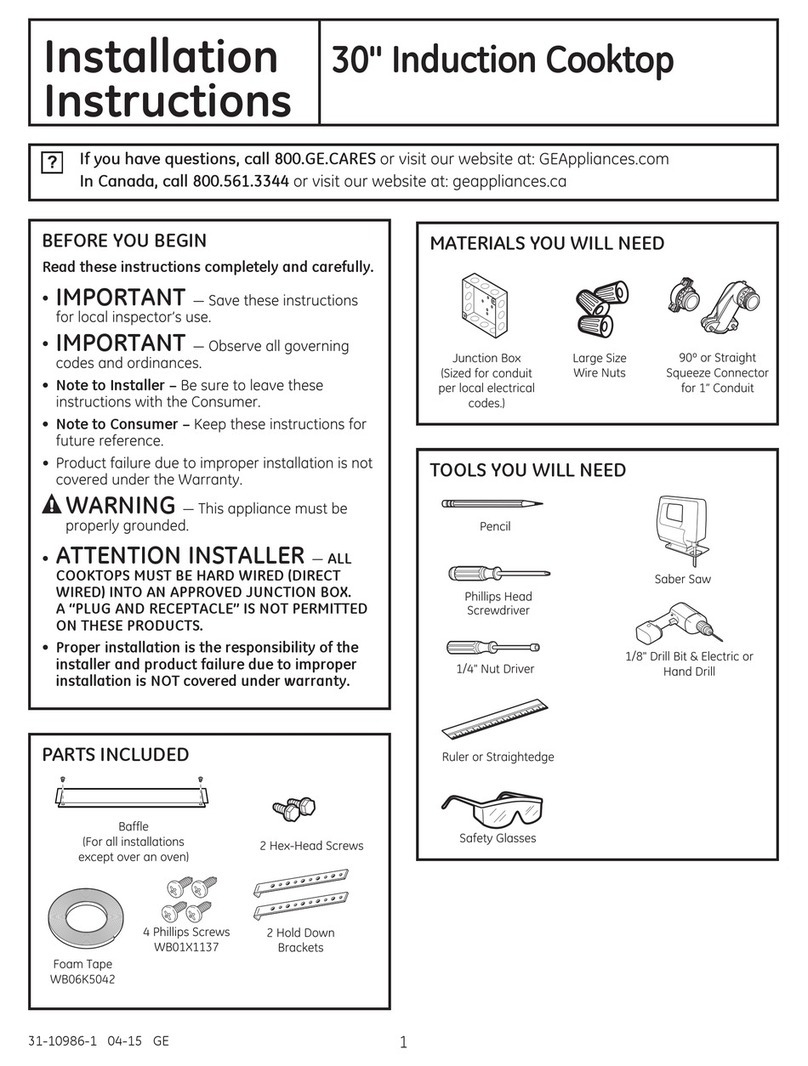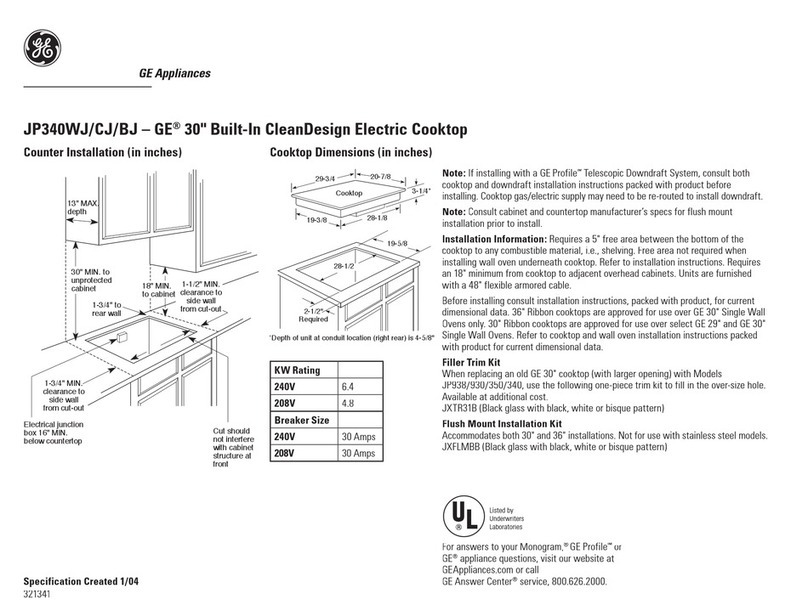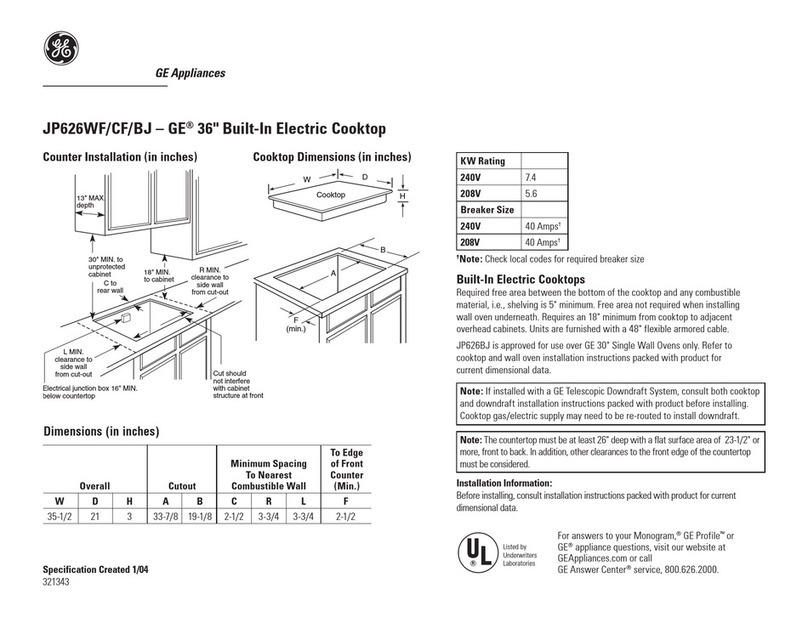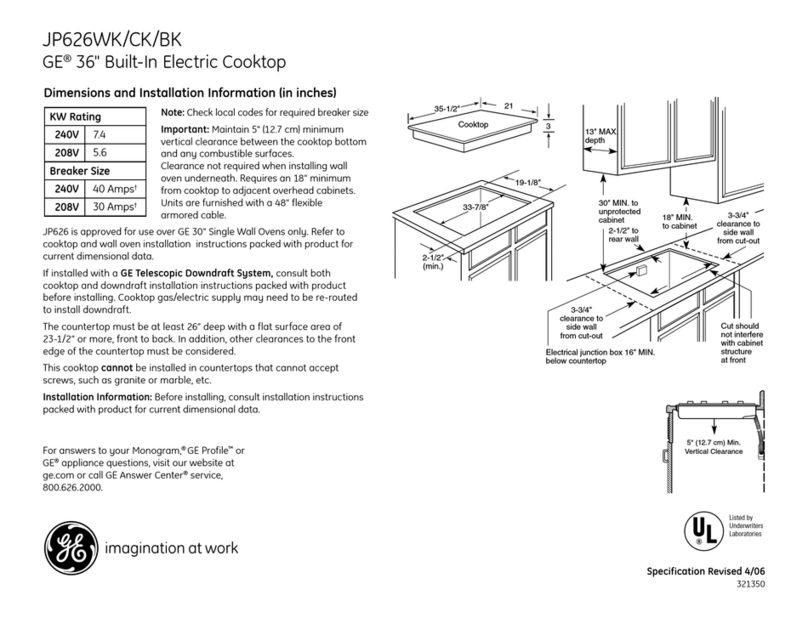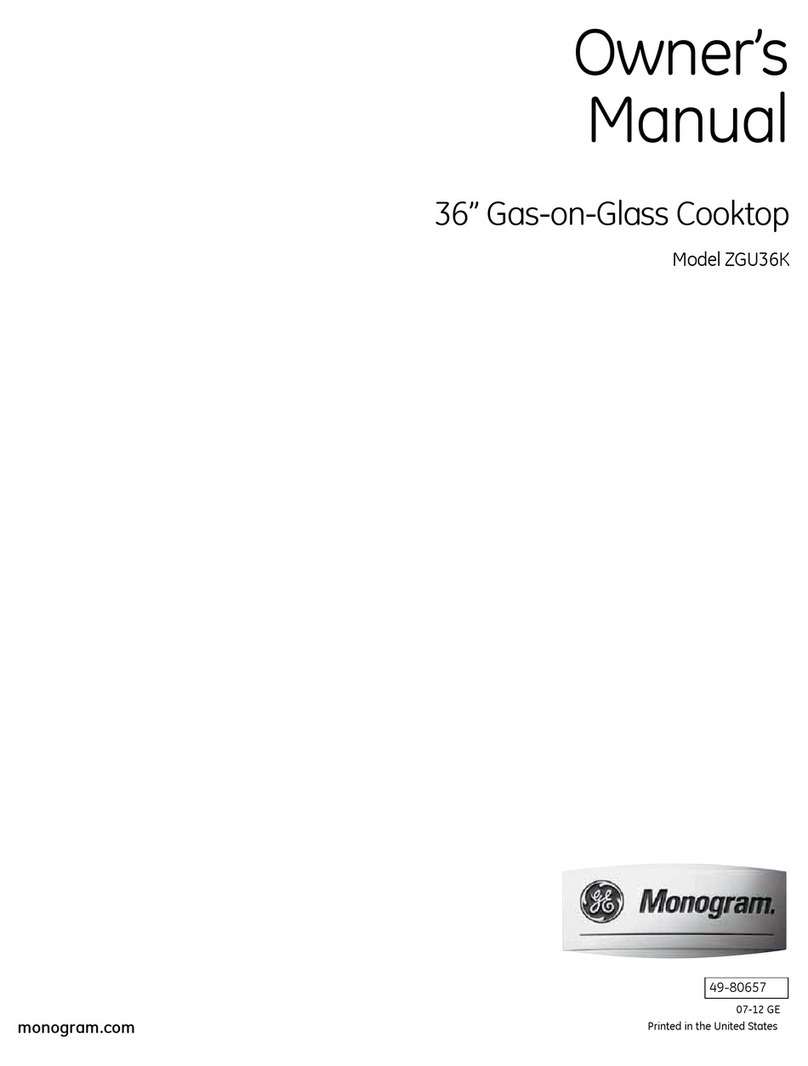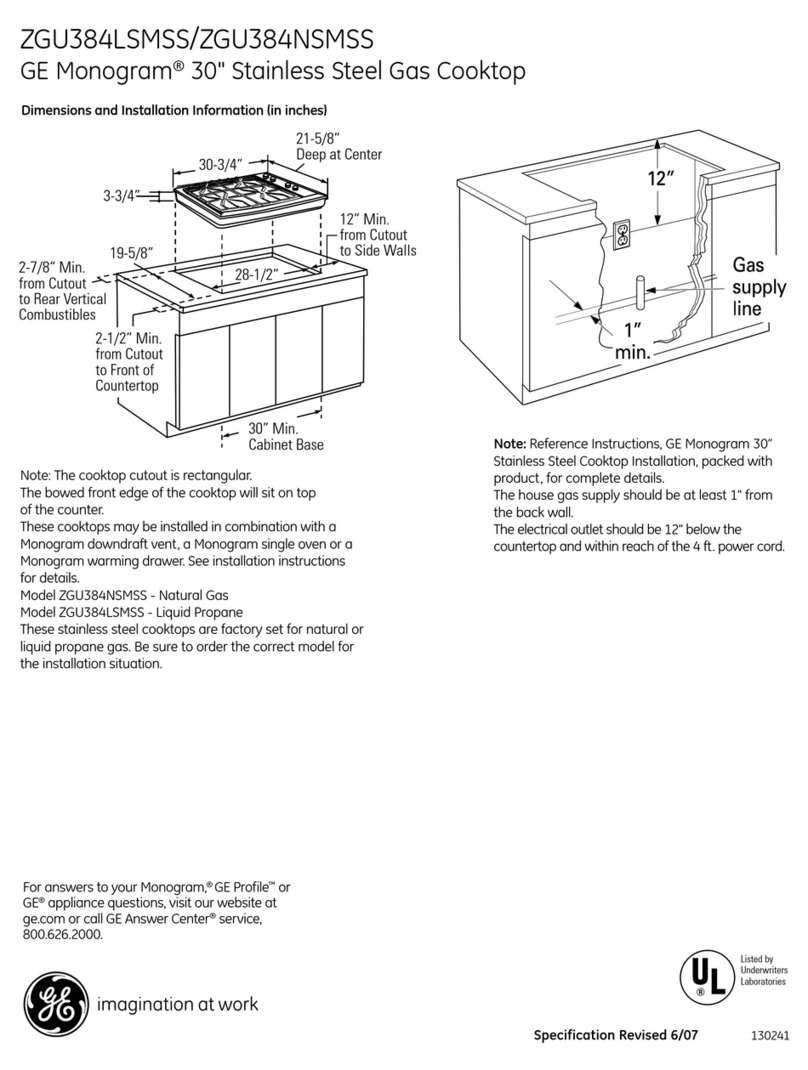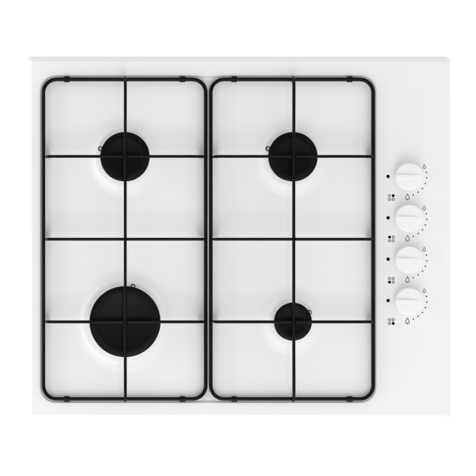—.
When using electrical appliances, basic safety
precautions should
be
followed, including the
following:
●
Have theinstallershow you thelocationofthe
circuit breakerorfuse. Mark it
foreasy
reference.
●
Use this appliance only for its intended use
as described in this guide,
●
Be sure your appliance is properly installed and
grounded by a qualified technician in accordance
with the provided installation instructions.
●
Do not attempt to repair or replace any
part of your cooktop unless it is specifically
recommended in this guide.
All other servicing
should be referred to a qualified technician.
c
Before performing any service, DISCONNECT
THE COOKTOP POWER SUPPLY AT THE
HOUSEHOLD DISTRIBUTION PANEL BY
REMOVING THE FUSE OR SWITCHING
OFF THE CIRCUIT BREAKER.
● Do not leave children alone-children should
not be left alone or unattended in an area where an
appliance is in use, They should never be allowed
to sit or stand
on any part of the appliance.
●
Do not allow anyone to climb, stand or hang
on the cooktop.
c
CAUTION: ITEMS OF INTEREST TO
CHILDREN SHOULD NOT BE STORED
IN CABINETS ABOVE A
COOKTOP—
CHILDREN CLIMBING ON THE
COOKTOP TO REACH ITEMS COULD
BE SERIOUSLY INJURED.
●
Never
wear
loose-fitting or hanging garments
while using the appliance. Be careful when
reaching for items stored in cabinets over the
cooktop. Flammable material could be ignited if
brought in contact with hot surface unit and may
cause severe burns.
●
Use only dry pot holders—moist or
damp pot holders on hot surfaces may
result in burns from steam.
Do not let
pot holders touch hot surface unit. Do not use a
towel or other bulky cloth in place of a pot holder.
Such cloths can catch fire on a hot surface unit.
● For your safety, never use your appliance for
warming or heating the room.
●
Do not store flammable materials near the
cooktop.
●
Keep the hood and grease filters
clean
to
maintain good venting and to avoid grease fires.
●
Do not
store
or use combustible materials,
gasoline or other flammable vapors and liqtids
in the vicinity of this or any other appliance.
●
Do not let cooking grease or other flammable
materials accumulate
on
the cooktop.
ii!!!!+
s
Do not
use
water on grease fires. Never
.,
pick up a flaming pan. Turn the controls
off. Smother a flaming pan on surface
unit by covering the pan
comp}etely
with a
well-
fitting lid, cookie sheet or flat tray. Use a multi-
purpose dry chemical or foam-type fire extinguisher.
Flaming grease outside a pan can be put out by
covering it with baking soda or, if available, by
using multi-purpose dry chemical or foam-type
fire extinguisher.
●
Clean the cooktop with caution. If a
wet
sponge
or cloth is used to wipe spills
on
a hot surface unit,
be careful to avoid steam burns. Some cleansers can
produce noxious fumes if applied to a hot surface.
When the cooktop is cool, use only Cook Top
Cleaning
Creme
brand cleaner to clean the cooktop.
●
Do not operate the
halogen)radiant
surface
units if the glass is broken.
Spillovers
or
cleaning solution may penetrate a broken cooktop
and create a risk of electrical shock. Contact a
qualified technician immediately should
ymn-
glass cooktop become broken.
●
Use care when touching the cooktop.
The glass surface of
the
cooktop will retain
heat after the controls have been turned off.
●
Do not touch the surface units. These surfaces
may
be
hot enough to burn even though they are
dark in color. During and after use, do not touch,
or let clothing
or
other flammable materials
contact the surface units or
areas
nearby surface
units; allow sufficient time for cooling, first.
Potentially hot surfaces include the cooktop and
areas facing the cooktop.
●
When cooking pork, follow the directions
exactly and always cook the meat to an internal
temperature of at least
170”F.
This assures that,
in the remote possibility that
&ichina
may be
present in the meat, it will be killed and the meat
will be safe to eat.
(ccminued nextpage)
3
—
